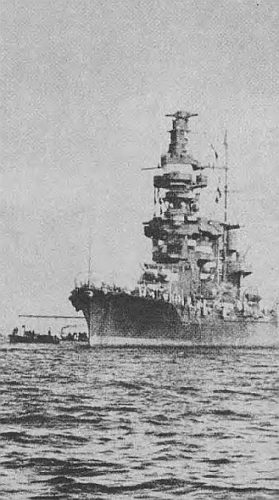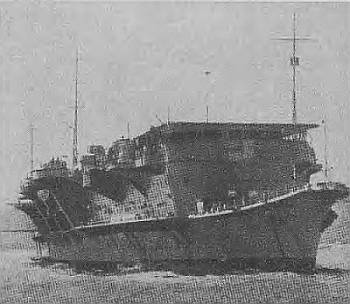- Author
- Swan, W.M., Lietutenant Commander, RAN
- Subjects
- Naval Intelligence
- Tags
-
- RAN Ships
- None noted.
- Publication
- March 1975 edition of the Naval Historical Review (all rights reserved)

In the third instalment of his article on Japanese Intelligence Lt.Cdr. Swan describes in detail the vast network of spies planted in California, Mexico and Hawaii by the Japanese. An army of some 10,000 agents penetrated the American continent in the decade before World War II. However, despite the great numbers employed the results were not commensurate with the effort. A remarkable insight into Japanese thinking is revealed.
IN THE EARLY 1930S, after the Manchurian annexation, Japan’s Intelligence activities were switched to the Panama Canal Zone, Central America and the continental US. Flushed with their successes in Asia, and their spoils in the Pacific from the First World War, the Japanese tackled North America with gusto. The distance of 4,000 miles and more from their homeland did not deter them, as the Japanese Navy and Merchant Marine were amongst the best in the world. The Captains and Officers of all these ships were to be used as couriers to carry the Intelligence products back to Tokyo, and thus into the card index. The slogans, as with Asia, was ‘Everything into the filing system‘. Fishing boats spearheaded this assault, and they began to appear in scores all along the western coast of the USA and Mexico. The Russians were to use these methods of Intelligence procurement in the 1950s and 1960s.
The Japanese Navy assumed the lion’s share of this Intelligence penetration of North America, and nearly all the ringleaders who came to the notice of American authorities were naval officers – usually Lieutenants, Lieutenant-Commanders and Commanders. The Naval Attaché in Washington was the head of this effort; but the Japanese made their first penetration in North West Mexico, concentrating in and around the large Gulf of California. They reckoned this 80-miles long reef and rockfree Gulf would make an excellent base, not only for fishing fleets and Intelligence activities but also for an invasion fleet of the future. The choice of Mexico for their entry to the white world was considered by the Japanese to be a stroke of genius, as much of it was flat and suitable for airfields and crosscountry movement, and the people were lackadaisical and friendly. Eventually, with the Panama Canal sabotaged, north-west Mexico and California prepared by agents and the US Pacific Fleet at Pearl Harbour put out of action, an army landed in the Gulf of California between Mazatlan and Guaymas could, using the railway through Nogales, enter Arizona and fan out across the western USA.

In my opinion, Japanese Intelligence now entered a rather ludicrous phase. It is true that it culminated in one of the greatest coups of all time, the treacherous attack on Pearl Harbour in December 1941, but Japan became utterly defeated as a result of it. In North America the Asian Intelligence modus operandi just would not work. The pedlars, stevedores, priests, monks, labourers and opium-traffickers would be of no use at all in a white country. In their place appeared small farmers, language students, barbers, nightclub owners, doctors, shirt-sellers, brothel-keepers, sodawater bottlers, dentists and fishermen all engaged in procuring information about every conceivable facet of American naval, military, and in many cases civil, accomplishments and intentions. A Dr. Yochuchi Matsui, an expert in scientific fishing, arrived in Mexico in 1935 to advise its government on fishing and seek permission to set up a Japanese colony of fishermen on the southernmost tip of the Lower California Peninsula. Japanese Intelligence had always been based on large numbers of agents, and by 1940 it was estimated that the number of them operating as crews of fishing boats in Central American waters and along the west coast of the USA reached a total of nearly 10,000, in about 500 boats. Many of these were naval men, and crews were changed frequently on the high seas by naval ships from Japan. This was done for security reasons as well as for debriefing, as one Mexican girl found to her cost when a Japanese sailor she became engaged to ‘didn’t come back next trip‘.

The Headquarters of Japanese Intelligence on the west coast of Central America was at Guaymas, half way up the eastern shore, of the Gulf of California, the head man there being a bottler of sodawater named Matsumiya. Another agent named Umukahi owned an ice-making plant and 500 acres of level ground in the district. Another, Morimoto, owned a small corn-milling business, Tanada was a barkeeper, and Ieda was a dentist at Topolobampo. A similar situation existed all the way up and down the west coast. In 1937, in Panama City alone, there were 47 Japanese barbers, with eight in Colon at the Atlantic end of the Canal. Takano, who owned a small business at 10 Avenida B in Panama City was the head. It is strange how many Japanese dentists were in Western North America in the decade before Pearl Harbour. One named Dr. Hoiyo Takaichi, lived at 40 Calle Granja in the town of Nogales, mentioned earlier. Japanese had such bad teeth that no Japanese entering Nogales district failed to call on Dr. Takaichi.
However, time does not permit me to dwell any longer on the Mexican, or ‘soft under-belly’ aspect of this subject. We must now move to California and to, amongst other places, the very important address of 117 Weller Street, Los Angeles. This address, known as the Medical Building, was ostensibly a private nursing home run by a Dr. Takashi Furusawa to which (in theory) any patient could apply for treatment. But no resident of Los Angeles ever became a bedpatient there, and strangely enough, only Japanese were ever seen to enter and leave the building. This establishment and the Red Mill brothel were to become pains in the neck to the FBI and the US Naval Intelligence when they learned what was going on, which was only when a Japanese was knocked down by a car and killed in a Los Angeles street. This Japanese, like so many others, was an English-language student, but his real identity was Lieut.- Commander Torii, on active service with the Navy.
Actually, Torii’s accident put the US Authorities, who were not very counterintelligence- minded at this time, on the track of the whole network in California. It did so because Dr. Furusawa made a slip. The police had picked up a briefcase that Torii had been carrying but, before they could ring the Japanese Consul, Furusawa rang them. He mentioned the accident and inquired about the whereabouts of the briefcase. His relief at being told the case would be handed over to the Consul could be heard over the phone. This alone aroused the curiosity of the police; but a further point was that newspapers reporting the accident had not yet reached the streets, so how had the doctor learned of the accident? The case was opened and the contents, which were photographed, proved Torii to be a Japanese agent. From this point, the FBI kept 117 Weller Street under observation, and were soon to discover its real purpose as well as a link between it and Japanese Intelligence on the east coast, and between it and German Intelligence. Naval Intelligence was also interested in this place. The Navy on both sides was very involved in all this, the USN partly because two of their naval men, Lieut.- Cdr. Farnworth and Communications Yeoman Thompson, had turned traitor for the Japanese money. This brace of modern Benedict Arnolds received 20 and 15 years gaol respectively.





